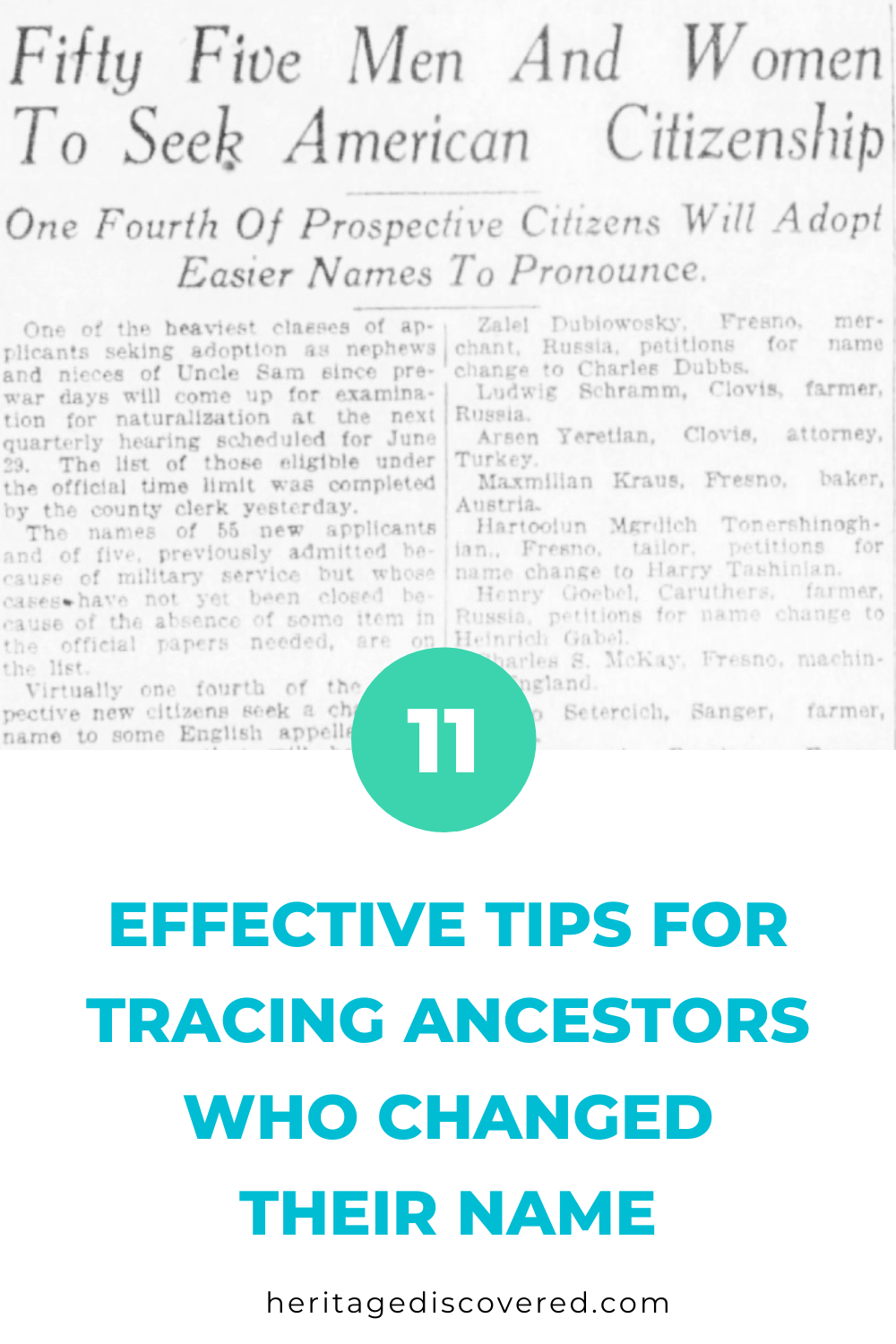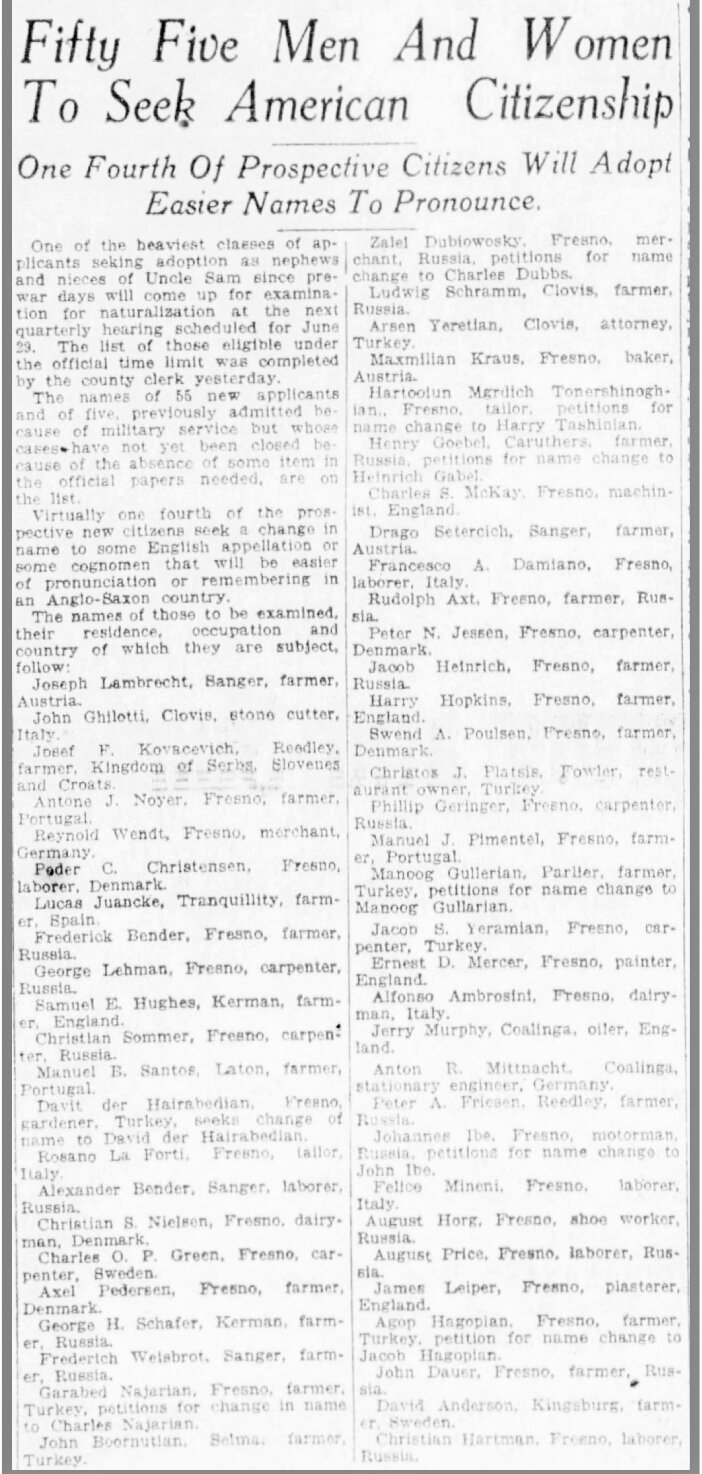11 Smart Strategies For Searching For Ancestors Who Changed Their Name
*This post may have affiliate links, which means I may receive commissions if you choose to purchase through links I provide (at no extra cost to you). All opinions remain my own.
A lot of us struggle with name changes when working on our family tree. It wasn’t uncommon for an ancestor to change their name, making it harder for us to track them.
Making it even harder is that it wasn’t always required to legally change your name when many of our ancestors immigrated.
I can definitely relate to this. Dealing with an ancestor’s name change is hard.
My great grandfather went back and forth between two last names from his arrival in 1912 to 1930. Even though the two names are similar, it does double the amount of searching I have to do. And actually more when you add in spelling and transcription errors to deal with.
I have a lot of roots in Quebec, and many of those lines have nom dit. A lot of them used their nom dit and last name interchangeably. It can be a challenge searching for them because you have to look for a lot of name combinations.
I also have a 4x great grandfather who deserted his family. I'm pretty sure he started a new life under a new name because I can’t find anyone even close to matching him anywhere in the US or Quebec, where he was from.
Related posts:
What To Know About Alien Registration Files And Where To Find Them
How To Add More Details To Your Family Tree With Passport Applications
What Are Naturalization Records And How Can They Support Your Research?
Where To Find Records For Emigrants To The United States
Why did my ancestor change their name?
There were a lot of reasons that immigrants changed their names when arriving in the US. But the most common were:
1) To get work. There weren’t laws barring discrimination like today. By changing their name to something more “American” sounding, they had a better chance of getting jobs. This was also a common practice for Jewish immigrants to avoid anti-Semitism.
2) Assimilation. People often changed their names to fit in. They didn’t want to stand out with a name that others couldn’t say or spell. So, they changed it to make it easier for others and to better blend in.
These changes could include anglicizing their name or translating it literally into English. LaCroix became Cross, Blanc became White, Schneider became Snyder.
This change could include anglicizing their name or translating it literally into English. LaCroix became Cross, Blanc became White, Schneider became Snyder.
Long names could be shortened. A name like Kucharzewski might be changed to Kucharz.
3) They didn’t like their name or wanted a fresh start. People could choose a name that they didn’t associate with the country they came from. This could be especially true for people escaping traumatic experiences like war.
Related posts:
Why Should You Use Ethnic Newspapers For Genealogy Research?
How to Find and Use Hidden Clues in Obituaries
11 of the Best Websites for Free Ship Passenger Lists
Why were names changed at Ellis Island?
Spoiler alert - they weren’t!
A very common genealogy myth is that family names were changed at Ellis Island.
In reality, passenger lists were created in the country of departure. This means their name when they arrived is likely to be relatively accurate, even if the immigrant themselves was illiterate. But mistakes could happen, of course.
When immigrants arrived at Ellis Island, their names weren’t written down by customs officials. They were checked off of master passenger manifests from the shipping companies.
Moreover, there were at least a couple of people who could speak the immigrant’s language when landing, and Ellis Island also had interpreters for many languages. These bilingual employees and translators would help clear up any confusion over a name.
Since staff generally weren’t taking down names and had interpreters to help them out, it’s less likely name changes happened right when arriving. The changes happened later as the immigrants settled into their new lives.
Related posts:
How to find Italian vital records on FamilySearch
What you need to know about Mexican civil registration records
14 Useful Free Resources for Hispanic Genealogy
4 Great Genealogy Resources For US Canada Border Crossing Records
How do you find out if you ancestor changed their name?
If you suspect your ancestor entered the country with another surname, you may be wondering how to find what their original surname was or where the records about the name change might be.
Since many name changes weren’t formal, these ancestors can quickly turn into brick walls. It can get tricky to trace them and confirm that the people with two different names – or more – are indeed the same person. One of my friends has an ancestor who used about four variations of his name!
When starting your research into a birth name, don’t immediately jump to the country they came from. Begin your search in the US with local, state, and federal records.
Here are some tips for researching an ancestor that you think changed their name:
1) Ask your family. It’s always a good idea to start by asking your relatives what they know about the family history. In the case of name changes, it can be key to knowing you’re on the right track. Check with your relatives for family stories about what the family’s name was when moving to the US. Note all variations that you learn about so you can search for them.
2) Look for naturalization papers and alien registration files. These records often list other names the person has used.
The great grandfather I mentioned has an alien registration file with the last name he was using at the time, and an AKA name, which was his birth name.
Naturalizations, especially starting in the 1900s, are likely to include other names the person went by. Passports might also note past names.
If you need help pinpointing when your ancestors arrived and were naturalized, use a US census immigration worksheet to round up all the immigration clues in one place.
Note that the declaration says he entered under the name of Frank Lawton, but was using the name Frank Cooper. Source: FamilySearch > Naturalization records (Fairfield County, Connecticut) > Declaration of intention, no. 31712-33955, 1932-1934 > no. 31718
3) Look into the extended family. What names did other family members use? How did they spell it? I had a client where the parents of the person she was searching for used their original surname, but their children used the newly adopted surname.
4) Obituaries are a great way to find birth names and other last names relatives could be using. Sometimes siblings and other relatives adopted different last names and could be mentioned in an obituary. When you find an obituary, be sure to thoroughly analyze it to catch all the clues to possible names.
5) Research what surnames were common in the area they came from. You may be able to figure out the original name by finding what surnames were there and seeing which ones are closest to the changed name.
For example, Geogen (in German) gives information on related names and where that surname can be found. If your German ancestor’s name is Fritz and you know they came from Saxony, you can see what names are like Fritz and where they are most concentrated. Similar names are Fritzsche, Fritzsch, and even Wirtz. But only Fritzsche and Frtizsch are highly concentrated in Saxony.
Websites like Behind The Name give related first names for a bunch of different ethnicities to help identify given names.
6) Check for ethnicity-specific resources. Were they in any ethnic clubs or churches? Those records may give clues about the name they immigrated under, as they would be with kinfolk and wouldn’t have to simplify their name around them.
And don’t forget about ethnic newspapers. Like club and church records, ethnic and foreign language newspapers would be more likely to use their given name – or at least closer to it.
7) Did the country they came from use a different alphabet? If so, the translation from one alphabet to another might clarify the change.
This court record gives not only the old and new names, but the names of his children. Source: FamilySearch > Petitions to change names (Forsyth County, North Carolina), 1891-1949 > Image 32
8) Look for court records. You might get lucky and find that your ancestor legally changed their name. See when it was required that a name change be done officially, and where it had to be filed. For example, in Massachusetts, name changes were handled by the General Court until 1852, then transferred to the Probate and Family Courts.
Some states have online indexes for legal name changes, like New Jersey. FamilySearch also has some name change records available for different states.
9) Newspaper notices. Some places required legal name changes to be reported in the newspaper. The notice could explain why they were changing their name.
Source: The Fresno Morning Republican (Fresno, California), 17 Apr 1922, Page 2 via newspapers.com
10) To help you find documents that may identify the name, create a timeline using the records you have to narrow down when and where they were using each name variation. This can save you a lot of time searching for court and other records in the wrong places and times.
11) Once you’ve found some likely candidates for someone who could be your ancestor using their birth name, verify that you have the same person. Find as many documents as you can, and correlate the evidence. Do facts like the names of parents, siblings, and children match up between your ancestor and the person you believe is them? Are birthdays and marriage dates the same?
Related posts:
14 Books That Will Help Your Irish Genealogy Research
9 French Canadian Genealogy Books to Energize Your Research
What is a nom dit and why did my French Canadian ancestor have one?
How to: Koseki Records and Japanese Genealogy Research
Final thoughts
A lot of us have at least one relative who changed their name after immigrating.
People changed their names for a range of reasons, including to fit in and simplify things.
But names were not changed at Ellis Island. They may have been right after, but it’s unlikely it happened when entering the US.
It can be hard to track down someone who has changed their name, but there are genealogical records about name changes, like naturalization papers, obituaries, and court records.
To make finding these records easier, try using a US census immigration worksheet to narrow down when they arrived and became citizens.
Do you think your ancestor changed their name?




